A parallel algorithm for computing microwave circuits
FDTD-DiakopTIcs divides a complex microwave circuit into a number of simpler sub-circuits, uses the finite time domain difference method (FDTD) to independently solve the time-domain characteristics of each sub-circuit, and uses parallel algorithms to connect the sub-circuits to finally obtain the characteristics of the entire circuit This method is suitable for the analysis and design of microwave circuits with complex structure and large scale. Compared with the method of using FDTD to design and study the entire circuit, this algorithm can improve the calculation efficiency by about five times under the condition of ensuring the same numerical accuracy, so it has Wide application prospects.
Keywords: time domain DiakopTIcs; finite time domain difference method; DiakopTIcs; microwave circuit
A Parallel Algorithm for Microwave Circuit SimulaTIons
SU Dong-lin ZHANG Qi-shang LU Shan-wei
(Department of Electrical Engineering, Beijing University of Aeronautics and Astronautics, Beijing 100083, China)
QIAN Yong-xi Tatsuo Itoh
(Department of ELectrical Engineering, University of California at Los Angeles, 405 Hilgard Ave., Los Angeles, CA 90095, USA)
Abstract: In FDTD-Diakoptics, a complex microwave circuit is partitioned into several simple sub-circuits. Each sub-circuit is analyzed by finite-difference time-domain (FDTD) method independently, and a parallel algorithm is applied to cascade all the sub -circuits together. The method in this paper is particularly suitable to the analysis and design of the geometrically complex structures and the electrically large circuits. With the same computational precision, the efficiency is improved approximately five times by using the proposed approach compared to the method using FDTD to analyze the circuit entirely. Therefore the method presented in this paper is very useful.
Key words: time-domain Diakoptics; finite-difference time-domain (FDTD); Diakoptics; microwave circuits
1. Introduction With the advancement of computer technology, the microwave circuits that can be studied by the FDTD-Finite Difference Time Domain (FDTD-Finite Difference Time Domain) are becoming more and more extensive, from passive circuits to active circuits, from linear circuits to nonlinear circuits , From quasi-TEM system to dispersion system, FDTD has been successfully applied.
However, when the geometric structure of the circuit is relatively complex and the electrical size of the circuit is large, both the computer memory occupied by it and the calculation time required are very huge, and even in some cases, even if the calculation time is spent, it is not available Required accuracy. For example, when analyzing waveguide diaphragm filters, in order to correctly simulate the geometry of all diaphragms, the grid size of the FDTD grid is selected to be very small, resulting in a very large number of grids describing the entire waveguide filter Since every two diaphragms are uniform waveguide transmission lines, it is obviously unnecessary to use the same grid as the diaphragm. People have used a non-uniform FDTD grid to solve this problem, when the size of the grid is compared When it is large, not only the convergence is not easy to control, but also it can not ensure the calculation time. The Diakoptics idea is applied to the full-wave analysis of microwave circuits. By dividing the circuit into several independent parts, different grids are used according to the specific structure of each part. , The full-wave time domain analysis is performed independently for each part. Since the grid of each part is uniform, it is easy to ensure that the calculation Method convergence.
2. The concept of Diakoptics Diakoptics is defined as: a circuit is decomposed into several simpler sub-circuits, the characteristics of the sub-circuits are calculated independently, and the sub-circuits are coupled and connected by the connection conditions. The characteristics of the sub-circuits in the linear circuit theory use the shock response function Representation; the coupling between the sub-circuits is completed by two algorithms, serial and parallel. The serial algorithm is connected from either end of the circuit to the other end, and the sub-circuits viewed from the reference surface are regarded as the previous level. The load of the circuit, find the input characteristics of the equivalent sub-circuit, and regard this input characteristic as the load of the sub-circuit of the previous stage ... The serial algorithm is relatively simple and easy to write computer programs, but the problems are: When a sub-circuit in the circuit needs to be adjusted, the part connected after the sub-circuit must be re-connected, and all connection calculations can only be performed sequentially in time and space, and the calculation efficiency is low; the parallel algorithm can be removed from the circuit Starting from any position of the, calculate the connection of several sub-circuits adjacent to each other at the same time, and the adjustment of the characteristics of a sub-circuit is not Affect the connection of other sub-circuits, especially when the characteristics of a sub-circuit need to be adjusted repeatedly, the calculation of the connection of the remaining sub-circuits only needs to be performed once.
When studying microwave circuit problems, if the microwave circuit can be equivalent to a linear network, it can be assumed that the Green function describing the characteristics of the microwave circuit can correspond to the shock response function in circuit theory. From the perspective of electromagnetic field theory, the time domain Green function g (r, t; r0, t0) is the field of the unit impulse signal applied at the point source t0 at time t0 at the observation points r and t, and satisfies the equation
![]() (1)
(1)
When two microwave sub-circuits are connected, there is a complicated coupling relationship on the connection reference surface. This coupling relationship can be visually described by the reflection and transmission of electromagnetic waves in a medium with two discontinuous interfaces, as shown in Figure 1 .So how to apply the Diakoptics algorithm to the analysis of microwave circuit characteristics? Before introducing this, this article first briefly introduces the mathematical description of the Diakoptics algorithm.
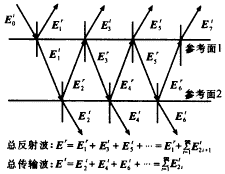
Figure 1 The reflection and transmission phenomena in the media can be used to visually describe the coupling relationship between the two microwave subcircuits 3. Mathematical description of the Diakoptics algorithm The mathematical description of the Diakoptics algorithm is given in series and parallel connection of two two-port networks. Figure 2 assumes that the shock response functions of the reflected and transmitted waves of the two sub-circuits are: gr1 (t), gr2 (t), gt1 (t), gt2 (t) and hr1 (t), hr2 (t), ht1 (t), ht2 (t), superscript "r" means reflected wave, "t" means transmitted wave, Subscript 1 means to stimulate the circuit from the input reference, and subscript 2 means to stimulate the circuit from the output reference. Let f be the shock response function of the circuit after the two subcircuits are connected. Use a serial algorithm to input the reference from the f network The shock response seen from the surface is: fr1 (t) = gr1 (t) + gt2 (t) * hr1 (t) * gt1 (t) + gt2 (t) * hr1 (t) Using the parallel algorithm, the impulse response functions fr1 (t), ft2 (t) viewed from the input port of the f circuit and the impulse response functions fr2 (t), ft1 (t) viewed from the output port of the f circuit are: fr1 (t) = gr1 (t) + gt2 (t) * hr1 (t) * gt1 (t) + gt2 (t) * hr1 (t) Among them, * represents time-domain convolution, and the meaning of superscript and subscript remains unchanged. |
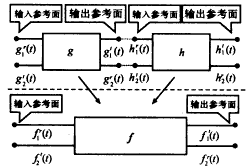
Figure 2 illustrates the connection diagram of the two sub-circuits of the Diakoptics algorithm When the multi-port sub-circuit is connected, the above algorithm is still established, but each impact function in the formula should be replaced by the corresponding sub-matrix. For example, let g network be an M + N port network with M inputs and N ports at the output, The h network is an N + L port network with N inputs and L ports on the output (the number of ports on the adjacent surface of g and h should be the same), and the reflection and transmission sub-matrices at the input reference surface of the g network are:
with
In the formula, the subscript represents the reference surface, i ↠j means: i is the reference surface where the response is located, j is the reference surface where the excitation is located; the superscript represents the port, m ↠n means: n is the input port, m is the output port Similarly, the reflection and transmission sub-matrices at the output reference plane of the g-network are:
with
The corresponding sub-matrix of h network can be obtained by the same method. The impact response function [f] of the network after connection is: [Fr1 (t)] = [gr1 (t)] + [gt2 (t)] * [hr1 (t)] * [gt1 (t)] + [gt2 (t)]
g1 ↠11 ↠2 * h1 ↠11 ↠2: the input of the first port on the reference surface of the h subnetwork output is the output generated on port 1 of the input reference surface of the g subnetwork through the coupling of the first port on the gh connection surface; g1 ↠21 ↠2 * h2 ↠11 ↠2: the input of the first port on the sub-network output reference plane is coupled to the output of port 1 on the sub-network input reference plane through the coupling of the second port of the gh interface; g1 ↠N1 ↠2 * hN ↠11 ↠2: the input of the first port on the reference surface of the h sub-network is coupled through the Nth port of the gh interface, and the output generated on port 1 of the reference surface of the sub-network input of g; gt2 (t)] * The first element of [ht2 (t)] describes the coupling of the input on the first port of the h network output reference plane to the output of the first port on the g network input reference plane. Fourth, the realization of Diakoptics algorithm in microwave circuit analysis. Diakoptics is derived from network theory. In order to apply it to the analysis of microwave circuits, it is first necessary to establish an equivalent circuit model suitable for microwave circuits using the Diakoptics method.
Where amn (z0, t0) is the coefficient of the (m, n) th basis function, that is, the amplitude, so that the microwave circuit viewed from the reference plane z = z0 can be equivalent to an equivalent time-domain multimode based on the basis function Circuit. The function form of the basis function can be an orthogonal function form suitable for general circuits, or a special orthogonal function especially suitable for certain types of circuits. Generally speaking, when the geometric structure of the circuit is more complicated, it is not easy to according to the characteristics of the circuit When you select a special orthogonal function as the basis function, you can choose a rectangular pulse function (take the value of the grid node as the average value of the entire grid, so the pulse width is the width of a grid). But because the pulse function describes only The local information of the system, therefore, to achieve sufficient accuracy, the function has a large number of expansion terms. When the orthogonal function can effectively express the global information of the circuit, usually only a few or more than ten items can achieve the required accuracy For example, for the problem of uniformly filled rectangular waveguides, such as selecting the basis function as the set of orthogonal functions {sin, cos} according to the distribution characteristics of the field in the waveguide, usually only 5 terms are needed to meet the requirements. ,at least It takes 60 pulses or 60 nodes to describe the spatial field distribution on the cross-section of the waveguide system more accurately. Fifth, FDTD-Diakoptics application examples and discussion This article takes the characteristic analysis of a waveguide bandpass filter as an example to illustrate the application of the algorithm. Figure 3 is a rectangular waveguide bandpass filter (WR34) with 5 diaphragms. According to this The method first divides the filter into 5 parts, calculates it using FDTD, and finds the field distribution at all connected reference planes (shown by the dotted lines in the figure). In the FDTD calculation, the Gaussian pulse modulation function is: f ( t) = AmaxA (x, y) exp [-((t-t0) / T) 2]. sin (2πf0t), where the modulation frequency f0 is the center frequency of the WR34-TE10 mode single-mode operating band; A (x, y) is the spatial distribution of the excitation amplitude. The Diakoptics algorithm needs to calculate the response of all possible basis functions when a single excitation is performed, so A (x, y) is selected in turn for each basis function. The excitation function amplitude Amax depends on its direction of propagation The basic principle of the attenuation and calculation accuracy is that the field at the discontinuity and the observation surface still has a sufficiently large amplitude. The value of T should ensure that the energy at the cutoff frequency point on the spectrum of the excitation pulse has a sufficiently small value In this example, the single-mode operating frequency band of WR34 is: fTE10 = 17.369GHz, fTE20 = 34.73 8GHz, f0 = 26.0535GHz, T = 200 (ps), t0 = 3T, Amax = 10, the basis function is φn (x) = sin |
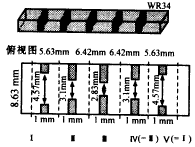
Figure 3 Schematic diagram of a five-diaphragm WR34 waveguide bandpass filter |
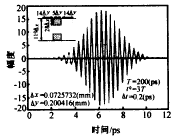
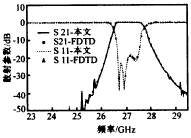
Fig. 4 The coefficients of the reflected wave basis function of the first subcircuit in Fig. 3 obtained by this method | Figure 5 Figure 3 shows the frequency characteristics of the WR34 waveguide filter |
| 6. Conclusion This article introduces a new method for analyzing complex microwave circuits: FDTD-Diakoptics method, which can overcome the disadvantages of the traditional FDTD method that requires large memory and long calculation time, and can give full play to FDTD. It is easy to study circuits with complex geometric structures The advantages of this method have been proved by several analysis and design examples of the author. This method is not only more flexible but also has higher accuracy, it is a more effective method for microwave circuit simulation analysis. |
It is well known that wireless serial is a very reliable and efficient way to connect serial devices. RS232 serial port is ideal for point-to-point data communication which makes setting up a communication link quickly and easily.
GrandComm`s serial RS232 RF Radio Modem is a radio data transceiver which allow you to send and receive wireless data between two serial devices or computers with RS232 serial port.
The communication range for serial RS232 RF radio modem typically range from 1 kilometer to over 50 kilometers.
This industrial grade radio modem has an air data rates of 19200bps in 25kHz channel spacing and 9600bps in 12.5kHz.
RS232 Radio Modem,RS232 Data Radio Modem,RS232 RF Modem,Industrial RS232 Radio Modem
Shenzhen PuFang Technology Co., Ltd. , https://www.hytelus.com
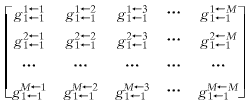

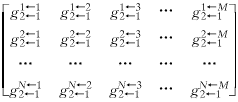
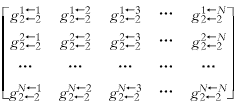
 (5)
(5)